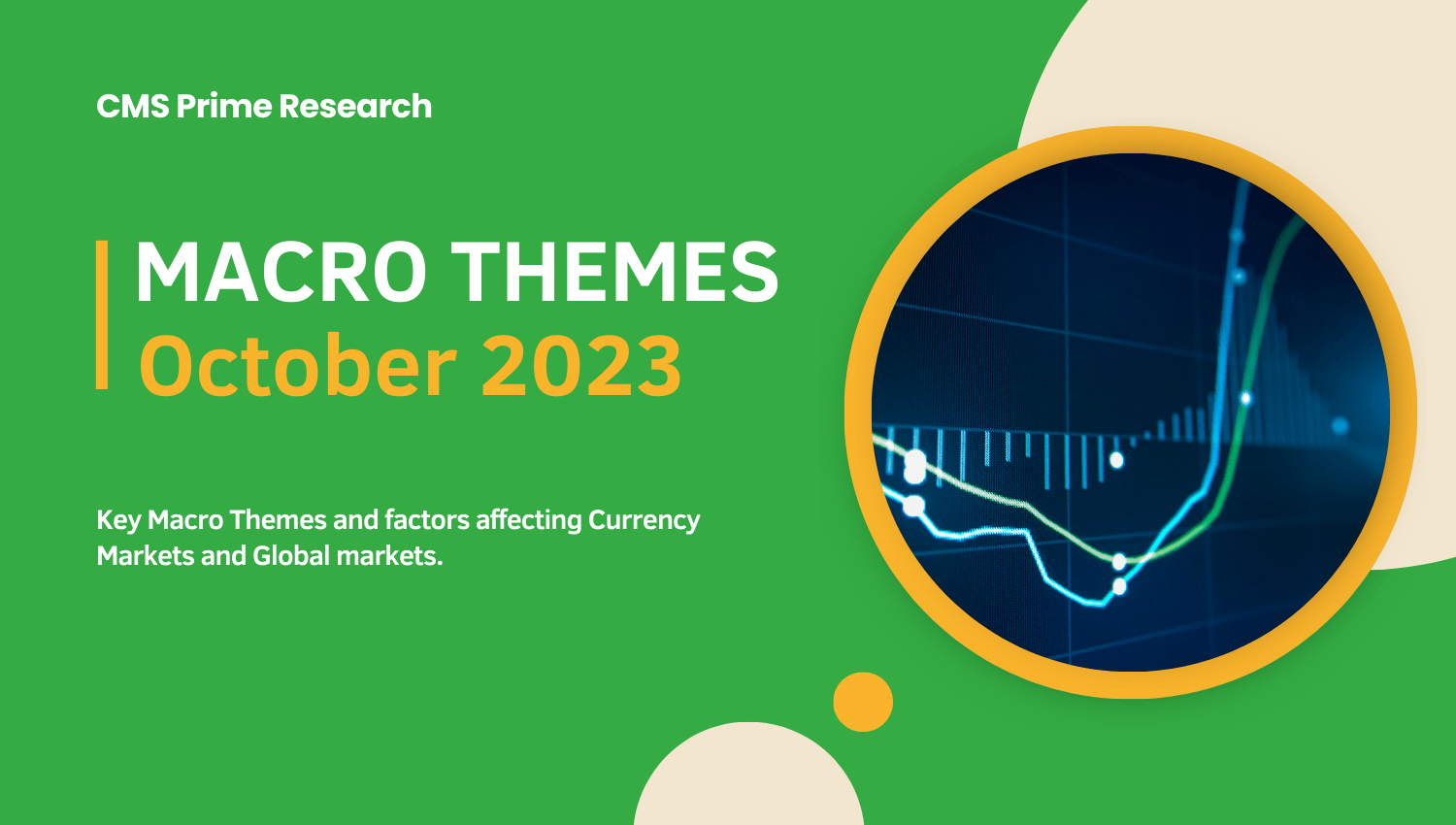
Introduction:
Top Factors:
Global Economic Growth and Trade Talks
There are signs of weakening economic activity beyond the manufacturing sector, reviving concerns about the growth backdrop. U.S.-China trade talks are scheduled to resume, and while a trade truce is possible, a comprehensive deal remains unlikely. Persistent uncertainty from the protectionist push is weighing on corporate confidence and slowing business spending.
Monetary Policy and Inflation
Major central banks have taken a dovish stance, with the Fed cutting rates in line with market expectations, following the European Central Bank’s broad stimulus package. However, there are limits to how much monetary easing can be delivered in the near term. Supply chain disruptions could foster mildly higher inflation, even as growth slows.
Earnings Season and Equity Markets
The third-quarter earnings season may offer some limited support to U.S. stocks in the near term, as the macro backdrop worsens and a growth rebound is months away. However, easier financial conditions are expected to help growth and earnings over 6-12 months.
China’s Economic Stimulus
China led Asia’s stock markets higher as investors cheered the approval of a trillion-yuan sovereign bond issue as a harbinger of stimulus. This move is expected to help the economy stabilize further and strengthen growth in the fourth quarter.
Currency Markets
In currency markets, the euro made its steepest drop for two weeks, falling 0.7% after the euro zone composite PMI fell deeper into contractionary territory to its lowest in three years. The Australian dollar was the standout gainer, rising 0.6% to a two-week high of $0.64, following hotter-than-expected inflation which lifted rate forecasts.
Emerging Markets
Emerging markets face their demons as traders mull whether the Fed will lift rates as high as 6%, a level many see as testing the pain threshold for developing economies. It’s not just the scale of the hikes, but also the speed that makes uncomfortable reading for those holding stocks, bonds, and currencies from emerging economies, which often buckle when global rates rise.
AI and Market Dispersion
Generative AI has commanded attention and moved markets this year, earning comparisons to the internet and smartphone for its transformative potential. There is also a trend toward increased market dispersion, evident in returns – a larger gap between top and bottom performers – but even more so in the return on equity (ROE) and valuations across individual stocks.
Global Market Dynamics
1. Volatility in the Bond Market: The bond market has experienced a renewed bout of volatility, impacting stock trading. Investors have been awaiting earnings from a handful of big tech companies.
2. Geopolitical Tensions: The Middle-East conflict has been a significant factor, with investors dialing back hedges put on before the weekend against an escalation of the conflict. This has led to a decline in gold and crude oil as haven demand waned. The yen briefly weakened past 150 to the dollar.
3. Commodity Trade Disruptions: The IMF’s World Economic Outlook report highlighted that disruptions in commodity trade, such as those caused by Russia’s invasion of Ukraine, could affect commodity prices, economic activity, and the energy transition. Further fragmentation could cause large swings in commodity prices and more volatility. Low-income countries would bear a disproportionate share of the economic cost due to their high reliance on agricultural imports.
4. Crude Oil Prices: Crude oil prices have been fluctuating, with prices slipping below $82 a barrel in October from a high of $91.59 in September.
5. Gold Prices: Gold prices have also been fluctuating, slipping from a five-month high in October. In September, the price of gold was $1,978.40.
7. Economic Outlook for Emerging Markets: S&P Global Ratings projects that five factors will determine the economic outlook for the emerging markets of Southeast Asia in 2024. These factors include slower global growth, constricted capital flows, rate cuts in the US, fiscal policy consolidation, and resilient domestic demand. High interest rates in the US are drawing capital away from emerging markets, and volatile energy prices are putting pressure on current accounts for energy-importing countries.
Key Factors Driving driving the recent Volatility in Currency Markets
1.Geopolitical Conflicts and Economic Stability: The volatility of a country’s currency is greatly influenced by its geopolitical conflicts and overall economic stability. For instance, the political turmoil in Turkey and Brazil has resulted in a consistent decline in the value of their currencies against the US dollar, leading to increased volatility.
2. Alignment of Monetary Policies: The synchronization of monetary policies among major central banks has also played a role in the market volatility. Market expectations have shifted to anticipate when the US Federal Reserve’s tightening cycle will reach its peak and how other central banks will respond to catch up.
3. Liquidity Conditions: The reduction of excess reserves by central banks such as the Federal Reserve and the European Central Bank has tightened liquidity conditions, which subsequently contributed to higher foreign exchange (FX) volatility.
4. Country Specific Factors: The forecasts for the dollar across different currency pairs in 2023 are heavily influenced by country specific drivers. For example, economic conditions in Australia, particularly those related to commodity markets like coal and iron, have caused significant volatility in the AUD/USD pair.
5.Financing in Emerging Markets: According to the Global Financial Stability Report, emerging markets are currently facing challenges in terms of debt sustainability, which can result in increased currency volatility. This volatility is influenced by various factors like market sentiment, inflationary pressures and interest rate fluctuations. The uncertainty and intricacy of global financial markets further contribute to the recent ups and downs observed in currency markets.
ECB's Stance:
The European Central Bank’s recent choice to maintain interest rates at their current levels at 4%, has had a significant impact on the economy of the Eurozone. This decision has affected various aspects, including the outlook for inflation, business activity and growth forecasts, market reactions and investor sentiment, as well as concerns about a potential recession in the Eurozone.
Outlook for Inflation:
The ECB’s decision to keep interest rates unchanged is part of their strategy to ensure that inflation returns to its medium term target of 2%. Inflation across the Eurozone dropped significantly in September, falling from 5.2% in August to 4.3%. The ECB believes that maintaining current interest rates for an extended period will contribute significantly towards achieving their inflation target. However, it is important to note that inflation is still expected to remain relatively high for an extended period and there are strong domestic price pressures.
Business Activity and Growth Forecasts:
The decision to hold interest rates steady comes amidst concerns about how previous rate increases have impacted European economies. There have been ongoing contractions in business activity, particularly in Germany, which indicates that the country may already be experiencing a recession.The economy is anticipated to remain sluggish for the rest of the year. However, as inflation continues to decline, households will experience a recovery in their real incomes. Moreover, with an increase in demand for exports from the Euro area, the economy is expected to strengthen in the upcoming years .
Market Responses and Investor Sentiments:
The European Central Bank’s decision to maintain interest rates was widely predicted by financial markets. This aligns them with the approaches taken by both the US Federal Reserve and the Bank of England. It’s worth noting that this decision follows a series of significant interest rate increases over several decades. However, various factors such as rising geopolitical tensions may lead to a near term surge in energy prices and potentially create a more uncertain outlook for the medium term .
Concerns about Eurozone Recession:
Keeping interest rates unchanged comes amidst growing concerns about economic recession within the Eurozone. Experts have expressed worries about a downturn primarily led by Germany, which is an integral part of the single currency area. The Bundesbank, Germany’s central bank, has indicated that its economy likely contracted during Q3 2023. In fact, Germany experienced no growth during Q2 and saw shrinkage of 0.1% during Q1 of this year. Economists define a recession as two consecutive quarters of declining economic output .
To sum up, the European Central Bank’s choice to maintain interest rates without changes has had a notable effect on the economy of the Eurozone. It has influenced different areas such as inflation, business activity and growth predictions. This decision demonstrates the ECB’s attempt to strike a balance between managing inflation and promoting economic growth in the face of difficult circumstances.
Central Banks Stance of Recent Market Volatility:
Central banks around the world have taken different approaches to address the recent fluctuations in currency values, depending on their unique economic circumstances and policy objectives. In the United States, the Federal Reserve has been primarily focused on combating inflation, which has become a significant challenge due to sudden increases in living costs. To tackle this issue, they have opted for raising interest rates, resulting in tighter financial conditions.
Similarly, the European Central Bank (ECB) has been grappling with heightened uncertainty and volatility in financial markets. In order to tackle high inflation levels, they have also tightened financial conditions. This adjustment has prompted a reevaluation of economic prospects and a correction of overly compressed asset price risk premiums. Additionally, the ECB is closely monitoring the banking sectors of some developed economies due to unexpected strains.
In response to recent currency volatility, the Bank of England has raised interest rates as a measure against rising prices. They have also introduced a temporary and targeted program involving purchases of long term UK government bonds. The aim is to restore market functionality and allow Liability Driven Investment (LDI) funds sufficient time to strengthen their ability to withstand future fluctuations in government bond markets.
The Bank of Japan has demonstrated a strong sense of urgency in addressing movements within currency markets.
The Finance Minister of Japan has emphasized the significance of maintaining stable currency values that reflect the underlying economic conditions. They have also expressed their disapproval of excessive fluctuations in currency rates .
Similar to other central banks, the People’s Bank of China has been addressing the challenges posed by currency volatility. Although specific measures were not mentioned in the search results, it is likely that they have utilized monetary policy tools to manage economic fluctuations and ensure price stability. This aligns with conventional practices followed by central banks .
In general, central banks have been employing a combination of traditional and unconventional monetary policy tools to handle recent currency volatility. These tools encompass adjustments in interest rates, interventions in foreign exchange markets and programs focused on purchasing assets. Additionally, central banks are prioritizing the maintenance of financial stability by fortifying reserves and mitigating vulnerabilities that could make the financial system susceptible to shocks .
Conclusion:
Key factors driving recent volatility in currency markets include geopolitical conflicts, monetary policy synchronization, liquidity conditions, country-specific drivers, emerging market financing, market sentiment, inflationary pressures, and interest rate volatility. Central banks worldwide have responded to this volatility by adjusting their monetary policies, with actions varying based on their specific economic conditions and policy goals.
The European Central Bank (ECB) decided to keep its key interest rates unchanged, which led to mixed reactions in financial markets and a pullback in the Euro against the US Dollar. This decision was influenced by several factors, including a drop in inflation, persistently weak business activity, tepid growth forecasts, and recession fears in the Eurozone.
The discussion also touched on global economic growth trends, the impact of trade talks on the global economy, and the slowdown in corporate confidence and business spending. The International Monetary Fund (IMF) forecasts a slowdown in global growth, with factors such as rising interest rates, the war in Ukraine, and the lingering effects of the COVID-19 pandemic contributing to this slowdown.
Finally, the transformative potential of generative AI and the trend towards increased market dispersion were highlighted as significant factors in the financial sector. Generative AI has been rapidly adopted by financial institutions for a broad range of applications, enhancing their utility and efficiency. However, it also brings about inherent risks. Market dispersion, on the other hand, refers to the range of potential outcomes of investments based on historical volatility or returns. The AI market has been growing rapidly, driven by the adoption of AI in various sectors.
Overall, these themes and factors are shaping the landscape of global financial markets and the economy, highlighting the importance of understanding and adapting to these changes for investors, policymakers, and businesses.
Disclaimer: This is not an Investment Advice. Investing and trading in currencies involve inherent risks. It’s essential to conduct thorough research and consider your risk tolerance before engaging in any financial activities.


